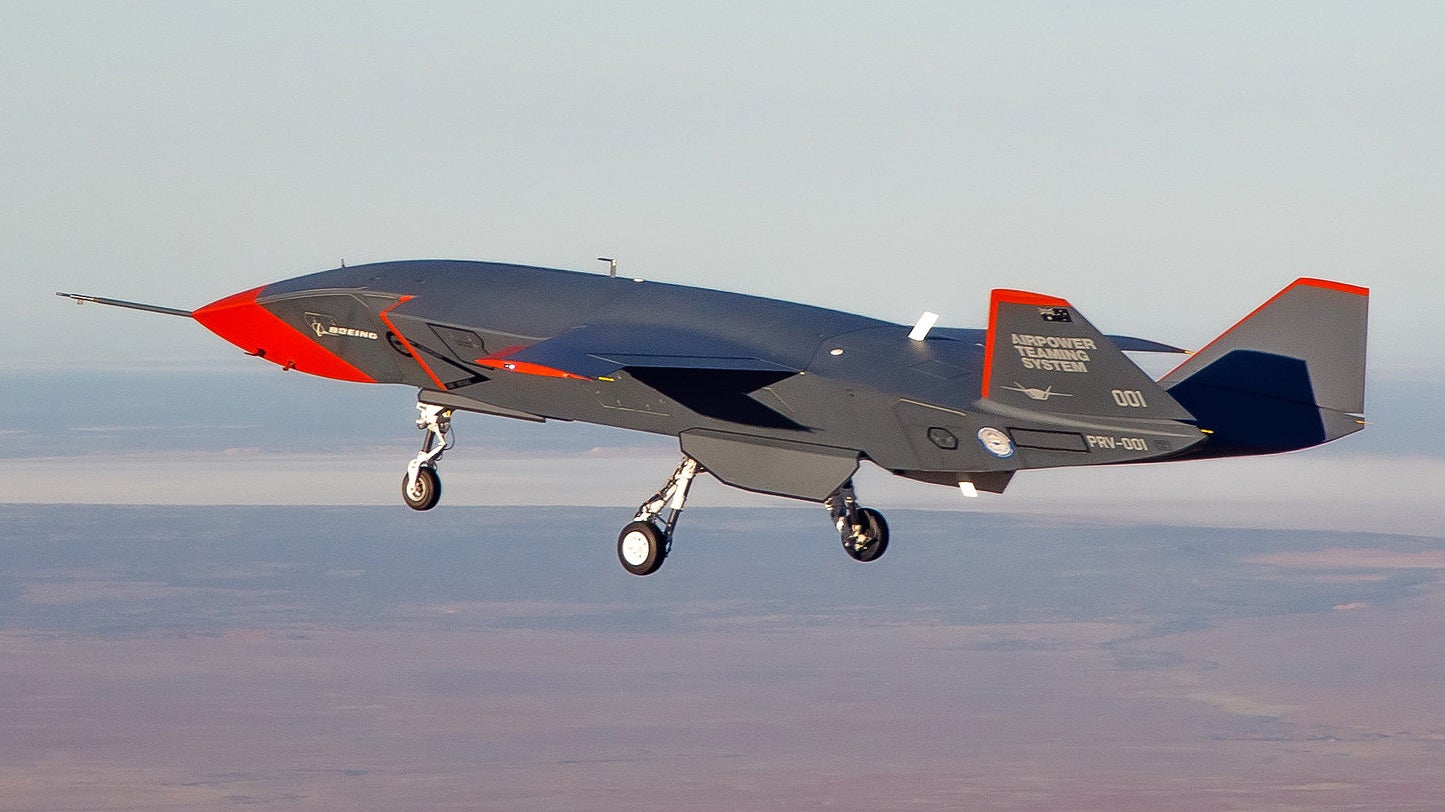Known as the Airpower Teaming System (ATS), Boeing Australia’s new loyal wingman drone for the Royal Australian Air Force (RAAF) has taken to the sky for the first time. It’s not clear exactly when the flight took place, but it occurred at the high-security RAAF Base Woomera and its surrounding range complex. The flight was originally supposed to occur around the end of 2020, but it was pushed back due to a number of factors.
The ATS, which is a modular design capable of having its entire nose section swapped out quickly, is seen as a landmark program for Australia and the RAAF. It is the first clean-sheet aircraft Boeing has brought to fruition outside the U.S. and the first military aircraft Australia has independently produced in over half a century. ATS is meant to work in combination with the RAAF’s fleet of F/A-18F Super Hornets, EA-18G Growlers, and E-7 Wedgetails, as well as F-35s, acting as loyal wingmen by providing additional offensive and defensive capabilities to these existing combat aircraft. Really, that’s an understatement. ATS has the potential to totally revolutionize the RAAF’s air combat tactics playbook. You can read all about this promising program and the ATS’s stated capabilities in this in-depth War Zone feature.

A Boeing press release reads, in part:
“The Loyal Wingman’s first flight is a major step in this long-term, significant project for the Air Force and Boeing Australia, and we’re thrilled to be a part of the successful test,” said Air Vice-Marshal Cath Roberts, RAAF Head of Air Force Capability. “The Loyal Wingman project is a pathfinder for the integration of autonomous systems and artificial intelligence to create smart human-machine teams.
“Through this project we are learning how to integrate these new capabilities to complement and extend air combat and other missions,” she said.
Following a series of taxi tests validating ground handling, navigation and control, and pilot interface, the aircraft completed a successful takeoff under its own power before flying a pre-determined route at different speeds and altitudes to verify flight functionality and demonstrate the performance of the Airpower Teaming System design.
“Boeing and Australia are pioneering fully integrated combat operations by crewed and uncrewed aircraft,” said Boeing Defense, Space & Security President and CEO Leanne Caret. “We’re honored to be opening this part of aviation’s future with the Royal Australian Air Force, and we look forward to showing others how they also could benefit from our loyal wingman capabilities.”
With support from more than 35 Australian industry teams and leveraging Boeing’s innovative processes, including model-based engineering techniques, such as a digital twin to digitally flight-test missions, the team was able to manufacture the aircraft from design to flight in three years.
This first Loyal Wingman aircraft is serving as the foundation for the Boeing Airpower Teaming System being developed for various global defense customers. The aircraft will fly alongside other platforms, using artificial intelligence to team with existing crewed and uncrewed assets to complement mission capabilities.
Additional Loyal Wingman aircraft are currently under development, with plans for teaming flights scheduled for later this year.
Beyond Australia’s borders, the ATS could become a massive export windfall for the country and Boeing Australia, one that is not dictated by the United States’ strict export controls. Demand for loyal wingman drones, especially those with low-observable (stealthy) characteristics, is set to explode in the coming years as air arms plus-up their air combat fleets. Pairing loyal wingmen with existing tactical jet types is emerging as a potentially promising and economical way to provide some of the capabilities that would only be offered by far more expensive stealth fighters. For those air forces that already have stealth fighters, loyal wingmen could broaden their combat aircraft capacity and drastically enhance the capabilities and overall flexibility of those existing fighters. The U.S. is actively pursuing similar capabilities in the form of its Skyborg program, as well as other parallel initiatives. Boeing Australia’s design could even factor into that program in the near future.
As for what comes next, three ATS demonstrators are being fielded that are said to be very close to representative of follow-on production vehicles. Considering how fast this program is moving—it was only announced just two years ago—flight testing will likely ramp up quickly, with all three test vehicles eventually joining up alongside other assets in the air. Much of the basic command logic that will drive the ATS has already been tested on subscale flying demonstrators.
There is no doubt about it, what you are looking at in this video is a major part of the future of air combat. We will update this post when more information comes available.
Contact the author: Tyler@thedrive.com
